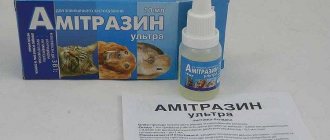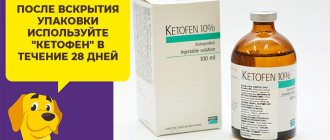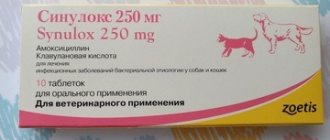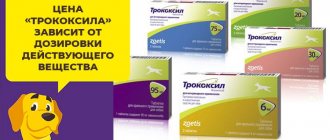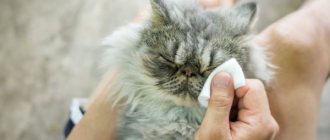Veterinary
Application of TILOSINOCAR for the treatment of postpartum endometritis in cows
According to the laws of classical therapy, treatment of any pathology should be carried out comprehensively, especially those manifestations in the etiology of which pathogenic and opportunistic microflora play a role. As a result, treatment is:
— Specific, aimed at pathogens (microorganisms) involved in the development of the pathological process
— Symptomatic, affecting the elimination of symptoms of the disease
— Pathogenetic, restoring the functions of organs and tissues.
Treatment of postpartum endometritis
needs precisely this methodically correct classical approach. Therefore, the veterinarian has to select and use a drug that causes contractile function of the uterus to evacuate the products of inflammation. Use an antimicrobial drug to influence the microflora that complicates the inflammation process. Think about how to normalize the uterine tissue, making it ready for subsequent pregnancy.
"Tylosinocar"
is just such a treatment complex that is able to solve all three tasks.
Research to study the effectiveness of this drug was carried out in the conditions of 6 farms in the Liozno district of the Vitebsk region of the Republic of Belarus. Farms were selected with approximately the same conditions of housing, feeding, as well as schemes of veterinary and sanitary measures for obstetric and gynecological pathology. Two groups of dairy cows were formed, aged from three to eight years, 5-12 days after calving, which showed signs of postpartum purulent catarrhal endometritis.
When treated with Tylosinocar
in sick animals, already 1-2 hours after administration of the drug, restoration of the contractile function of the uterus was observed, which was characterized by a decrease in its size and increased secretion of exudate. After 5-7 days of treatment, the uterus was in the pelvic cavity, climbed into a handful of hands, the release of exudate decreased and it acquired a mucous character. By days 9-11, discharge from the uterus stopped, the cervical canal closed, and clinical recovery of the animals began. In cows of the control group, clinical recovery occurred at a later date (14-16 days). The results obtained are shown in Table 1.
Therapeutic effectiveness of "Tylozinocar" in the treatment of cows with postpartum endometritis
Analogs and price
The drug has many analogues, which contain the active ingredient – tylosin. These are Farmaksin, Farmazin.
The cost depends on the volume of the bottle. The medicine is available in 10, 100 and 200 ml. The price starts from 35 rubles per ampoule.
Tylosin is a good natural antibiotic. The popularity of the drug is ensured by the absence of side effects, a wide spectrum of action and ease of dosage. Many veterinarians prescribe it for various pathologies, not only for dogs, but also for cats, rodents, birds and cattle.
Indications and principle of action
The beneficial use of Tylosin for the treatment of dogs has been scientifically proven. The medicine is effective against many gram-positive and gram-negative microorganisms.
The use of "Tylosin" for the treatment of dogs
Its action is based on the penetration of tylosin into the bacterial cell and disruption of ribosome synthesis. As a result, the microbial cell is destroyed and protein synthesis in it stops.
The medicine is used for the following diseases and pathologies:
- mycoplasmosis and chlamydia;
- inflammatory diseases and infections;
- pneumonia, colitis, diphtheria and other intestinal diseases;
- arthritis and arthrosis;
- complications after surgery.
Many years of research have proven that Tylosin, unlike other antibiotics, does not suppress the immune system, but rather strengthens it.
Tylosin – 50, broad-spectrum veterinary drug
How to store Tylosin
Damaged vials with obvious presence of sediment should not be used to treat dogs. Unopened vials are stored in a cool place away from feed, food and household chemicals.
The shelf life of Tylosin is 2 years.
An open bottle is good for 28 days. However, it must be stored in the refrigerator.
"Farmazin" analogue of "Tylosin"
Correct dosage of tylosin dog
There are no specific recommendations for the use of tylosin in dogs due to certain factors ranging from the nature of the disease, the weight and age of the animal.
The dosage of tylosin varies widely, as the prescription and purpose also vary. Tylosin comes in different dosages and formats and is administered in different ways (orally or by injection). They can be in the form of powder, injectable oral liquid, and capsules.
The duration of administration depends on the condition being treated, the response to the substance and subsequent development. In dogs, the usual dose is 5 to 10 mg or 10 to 20 mg/kg every 24 hours for up to six weeks. A recent randomized study showed the effect of tylosin on stool consistency in dogs with recurrent diarrhea. At a dose of 25 mg/kg once daily for seventy days, tylosin was more effective than placebo.
Reviews
Owners
Olga, 35 years old, Moscow:
“My pet was diagnosed with chronic gastritis. The vet prescribed antibiotics and vitamins. After 8 injections, the symptoms disappeared and a healthy appetite returned.”
Kirill, 46 years old, Omsk:
“My alabai had a digestive disorder. Tylosin was prescribed, the dog tolerated the injections well. The stool improved within a week.”
Veterinarians
Sergey, veterinarian, 30 years old, Moscow:
“The drug is indicated for the treatment and prevention of enzootic pneumonia caused by microorganisms sensitive to macrolide antibiotics. The drug will reduce the likelihood of developing dangerous pathologies.”
Anton, veterinarian, 50 years old, Grodno:
“Can be used for pregnant women, nursing mothers and puppies. The medicine will attack only certain bacteria and acts against various pathogens (streptococci, corynebacteria, staphylococci).”
Study on the ideal dosage of tylosin
The Biomedical Center Institute performed a study to determine whether administration of a 25 mg/kg dose of tylosin once daily for seven days was effective in controlling tylosin-sensitive diarrhea in dogs. The purpose of the study is to compare the results of tylosin dosages of 5 mg/kg and 15 mg/kg with the usual dose of 25 mg/kg per day. Fifteen dogs that were already receiving 25 mg/kg once daily were included in the study.
Fifteen dogs were divided into two groups (eight and five). The first group of dogs was given 5 mg/kg tylosin, while the second was given 15 mg/kg. The first group of eight dogs responded to the 5 mg/kg dose, and for the remaining group, six of the seven dogs responded to the 15 mg/kg dose.
After the entire study, it was found that dogs can be given a suitable dose of 15 mg/kg or 5 to 5 mg/kg tylosin to treat relapse of diarrhea.
Features of use in cats
When treating cats, Tylosin is usually administered subcutaneously. Some cat owners do subcutaneous injections, but veterinarians still recommend intramuscular injection (this is due to the effectiveness of the drug.
Tylosin 50 was injected into Merle subcutaneously (there was no room for intramuscular injection). The necrosis was only due to one unsuccessful injection - the needle was not inserted deep enough. After the injection, rub the area well. I sorted the skin directly with my fingers.
Celtivar, forum user
https://ratmania.ru/forum/index.php?topic=1033.20
Consultation with a veterinarian is recommended before using an antibiotic. Only a specialist can determine the nature of the bacteria that caused the disease. In addition, it is very important to calculate the correct dosage of the medication and draw up a treatment regimen. A veterinarian will help you do this correctly.
Some of my friends do not always go to the veterinary clinic. Allegedly, you will have to pay to visit a veterinarian, but he will still prescribe the same medications. If you have such doubts, you can at least call the clinic and ask all questions over the phone. This way you can make sure your actions are correct.
Video: veterinarian Evgeniy Naumenko on intramuscular injections
Dosage, treatment regimen
The antibiotic Tylosin needs to be administered only once a day. Important: it is recommended to change the injection site when re-injecting . That is, if the course of treatment lasts 5 days, then all 5 injections must be given in different places. Typically, veterinarians prescribe a course of treatment with Tylosin for no more than 7 days.
The dosage should be selected based on the animal’s body weight.
Table: selection of drug dosage
| Cat weight | Tylosin 50 | Tylosin 200 |
| 3 kg | 0.3–0.6 ml | 0.075–0.15 ml |
| from 4 to 5 kg | up to 1 ml | up to 0.25 ml |
| up to 10 kg | up to 2 ml | up to 0.5 ml |
| more than 10 kg | 3 ml or more | 0.75 ml or more |
Thus, per 1 kg of animal body weight there is 0.1–0.2 ml of Tylosin 50 or 0.025–0.05 ml of Tylosin 200.
You can calculate the dosage yourself using the instructions for use (it is included in the package)
Features of use in pregnant cats and kittens
Antibiotics are prescribed to pregnant cats quite often, as this medicine is tolerated without complications. Typically, veterinarians are guided by the following principle: “the main thing is to do no harm.” That is, if it is possible to cure an animal without an antibiotic, then it is better to refrain from using it.
Pregnant cats can also be treated with Tylosin. But there is a subtlety here - it is better to keep the cat separately from the kittens. Firstly, the lion's share of the active substance will be excreted in the milk, and secondly, the mother can infect the kittens with her disease. If the medicine gets into the hands of babies with milk, they may develop severe dysbiosis.
If Tylosin, which gets into the kitten’s stomach, disrupts the microflora, then injections, on the contrary, can cure it. Usually, when prescribing this drug to babies (regardless of the kitten’s age), veterinarians recommend injecting 0.3 ml of Tylosin 50 with an insulin syringe once a day. An intramuscular injection will be more effective, but some cat owners and veterinarians are afraid of damaging a kitten’s limb, so they give the injection subcutaneously. In general, Tylosin is not as painful a drug as some other antibiotics, but a baby from such an injection in the thigh may begin to limp. It is ideal if the injection is performed by a specialist.
To treat a kitten, a veterinarian may recommend subcutaneous injections of Tylosin, but it is better to entrust the administration of such injections to professionals
Interaction with other drugs
The developers of the drug do not recommend using the antibiotic Tylosin together with other antibacterial drugs:
- ampicillin;
- oxacillin;
- cephalosporins;
- lincomycin;
- chloramphenicol;
- clindamycin;
- tiamulin, etc.
The fact is that the bacteriostatic effect of Tylosin can be reduced in cases where a more aggressive effect is simultaneously exerted on the bacteria. But veterinarians usually do not prescribe 2 different antibiotics as part of the same treatment regimen. And if suddenly this happens, you can safely begin to doubt the competence of such a veterinarian. It is allowed to use Tylosin with most symptomatic medications. For example, for an intestinal infection of bacterial origin, Tylosin can be prescribed simultaneously with several drugs:
- probiotics (Enterol, Zoonorm, Bifitrilak, etc.);
- vitamins or vitamin complexes;
- decongestants that relieve allergic symptoms;
- immunostimulants (Maksidin, Fosprenil, Gamavit, etc.);
- anthelmintics (if necessary).
Photo gallery: some drugs that can be prescribed along with Tylosin
Although Tylosin does not have a detrimental effect on the natural microflora of the stomach, veterinarians still prescribe bifidobacteria
Vitamins and immunostimulants are prescribed by veterinarians for almost any disease
Both immunomodulators and vitamin complexes can be bought at any pet pharmacy
Anthelmintics are usually used before treating the underlying disease
If the animal’s illness is accompanied by allergic manifestations (for example, swelling), then Suprastin, Tavegil, etc. can be prescribed
Possible side effects and contraindications
The developer of Tylosin reports that there will be no side effects from using the antibiotic. In rare cases, there may be an allergic reaction. This is due to the body's hypersensitivity to the components of the drug. However, such sensitivity cannot be determined in advance; it will manifest itself after use. In such cases, the use of the antibiotic is stopped, and, if necessary, medications that eliminate the symptoms can be prescribed. In some cases, an allergic reaction caused by Tylosin will stop on its own, without intervention.
Even repeated use of Tylosin does not have a negative effect on the reproductive function of the body. This bacteriostatic drug compares favorably with other antibiotics.
An allergy to Tylosin can also occur in a veterinarian who has worked with this antibiotic. There is no need to treat this reaction; it goes away quickly after stopping the use of the antibiotic. To avoid allergies, it is recommended to follow simple safety measures when working with the medicine (gloves, washing, etc.). Direct contact with the drug is also not recommended; if the solution gets on the skin or mucous membranes, they should be washed with plain water. If an allergy occurs and does not go away after stopping the use of the medicine, you should consult a doctor.
Contraindications to the use of Tylosin are the body's sensitivity to the components of the drug and combination with other antibiotics.
In order to give an injection to a cat, any clean, intact gloves (even disposable ones) will do.
